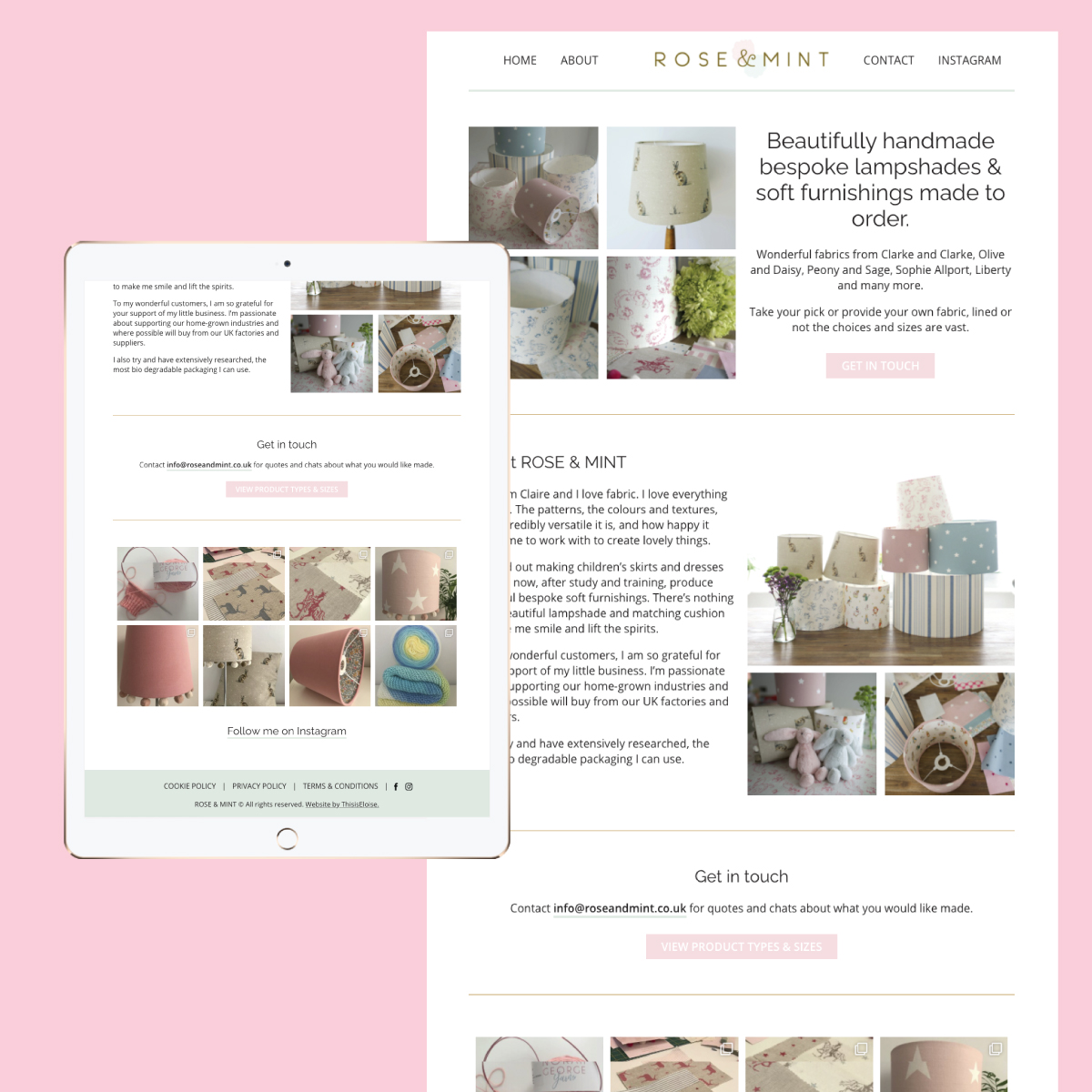One page websites have become quite a trend in the past 5 years. But just like all trends, it’s good idea to distinguish whether or not they’re right for your business before you rush off to implement the fashion on your site.
There’s no right or wrong answer here – only what’s right for you. But how do you determine that?
There are defiantly pros and cons to consider so read on to find out why a one page website may or may not be a good idea for your business.
Reasons to avoid a one page website:
Creates overwhelm
When you have a lot of content and options on your website, putting it all onto one page can create overwhelm which leads to choice paralysis and stops people from taking action on your site. This is especially true on mobile as people have lots more info to scroll through.
When someone has to continuously scroll for agggessss whilst hunting for the info they need, they’re bound to give up and click off sooner.
Limited scaling

Say you want to integrate a blog or shop or new service offering. Having a one page website makes it difficult to add these in.
You’ve got 2-3 sections on your website and everything fits neatly. But all of a sudden you’ve got an idea for a new course! You then have to take your one page website and think “where’s this going to fit in?”.
With a multi-page website it’s easy as you just make another page. But with a one page website, you’d have to expand into multi-page site anyway or faff about trying to strategically integrate it whilst keeping that seamless experience.
If you’re just about getting away with the amount of content on your site before it becomes information overwhelm then adding in another section will tip the balance!
No separate URL sharing
If you want to share a particular service or snippet on your site, doing so with a microsite is limited as you only have 1 URL.
Take my Lead Boosting Website Reviews for example. If I want to talk about that on social media, I can just drop the link to that page. And when they click on it from Facebook or Instagram or where ever, they’re directed to that page with no extra stopping points. They go from A to B as seamlessly as possible.
With a one page website you can’t really do that. You have to prompt the person to go hunt for the info via the 1 URL link you are sending them too.
You can add in an anchor link (which looks like this: thisiseloise.co.uk/#one-page-websites) but if it doesn’t work or skips over the section or jumps to the section with a really clunky animation then it can leave people feeling lost and confused.
Anchor URLs have limited redirecting capabilities too so when if you do expand into a multi-page site, redirecting all those people you gave that link to might be tricky.
Plus with only 1 URL to share, implementing both internal and external linking strategies will be tough and can impact your SEO. Which brings me nicely onto….
Negative impact on SEO

If you want to implement an SEO strategy, having multiple pages or a blog gives you endless opportunities to fill your site with keywords and phrases.
The more pages / posts your site has, the more Google has to look at. The more Google has to look at, the more accurately it can understand what your website is about. And if your site is using the right keywords, the more likely you are to rise up in the search results pages.
Plus adding fresh, new content boosts your SEO brownie points as it signals to Google to come back and crawl (read: check out) your site again. If you only have a one page website then adding new content might be a challenge.
Reasons to implement a one page website
Despite the negatives above, a one-page website can be the perfect first step to getting a website. Sometimes you just need something quick and easy to get up and running with. A one-page website might be the way to go if…
You’ve only have 1 offer

If you only have one offer or one CTA (Call To Action) then having a multi page site might seem kinda pointless.
A one page website works really well here because it essentially acts like a landing page. The good thing about landing pages is they are less distractions and no where for the website visitor to go apart from to decide if they are in or out. Do they wanna book a call or not? Do they want to sign up for your offer or not?
Sometimes this boosts conversions as the distractions of the other pages are gone and their focus is only directed towards taking the action you want them to take.
You don’t have a lot of content
I’ve built one page websites for clients who had no interest in a blog or SEO strategy and didn’t have a lot of content to work with. They only offered 1-3 basic services and their website could very easily be split into sections.
No blog, no shop, no different services page. Just a home, about and contact section. With people skimming content, keeping text on your website to a minimum can be quite the conversion booster!

What’s best for you?
How do you know what’s right for you? I say take a content first approach. If you’re creating your website and find you’re spreading your content really thin just to flesh out your website then by all means get a one page website. If you’re trying to cram lots of text onto one page then it’ll be easier to break it out into different pages.
One final thought…
When you do find yourself looking at these website trends like one page websites, ask yourself…”What do I like about it?” Maybe it’s not about the trend itself but rather something about the trend that’s highlighting something for your website.
Maybe it’s because that website looks organised and yours doesn’t? Maybe it’s because there’s not tonnes of content to read through and yours feels overwhelming? Maybe because the layout is easy to scroll through but your site doesn’t flow so well?
Having a think about what you like about the trend can give you indicator of what is/isn’t working for you. So don’t rush off to implement a trend because you saw something and got shiny object syndrome. Because the trend is not always the solution but an indicator to what is.
